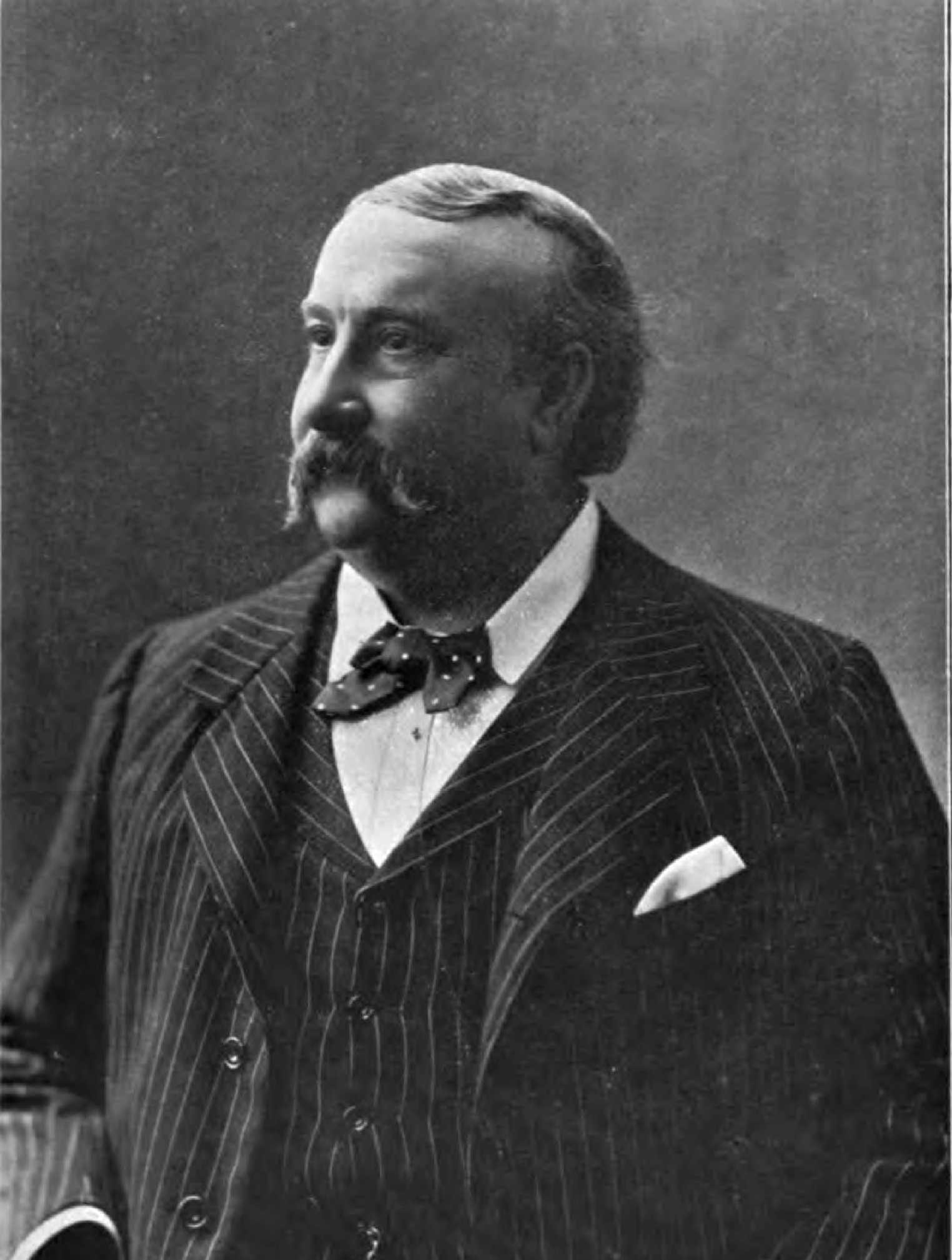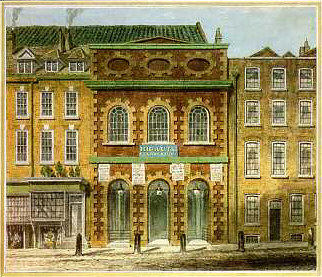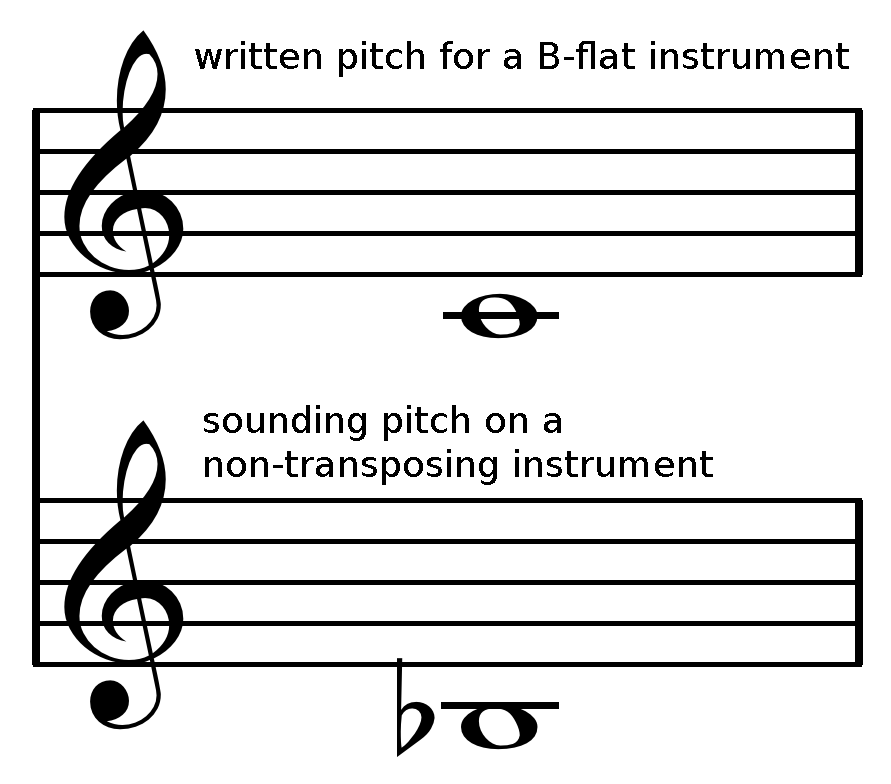|
Edward Lloyd (tenor)
Edward Lloyd (7 March 1845 – 31 March 1927) was a British tenor singer who excelled in concert and oratorio performance, and was recognised as a legitimate successor of John Sims Reeves as the foremost tenor exponent of that genre during the last quarter of the nineteenth century. Early training in choral tradition Edward Lloyd was born in London, into a musical family. His mother was Louise Lloyd, née Hopkins, of the well-known Hopkins musical family. His father Richard Lloyd had, by invitation, assisted as a counter-tenor on 'Show Sundays' at Worthing when choral concerts were directed by the fourteen-year-old Sims Reeves. Young Lloyd began singing as a chorister at Westminster Abbey, and in 1866 became a member of both Trinity College and King's College chapels in the University of Cambridge. In 1869 he joined the choir of St Andrew's, Wells Street (under Barnby) and was engaged for the Chapel Royal in 1869–71. In 1871 he sang in the St Matthew Passion at the Glouce ... [...More Info...] [...Related Items...] OR: [Wikipedia] [Google] [Baidu] |
Acis And Galatea (Handel)
''Acis and Galatea'' ( HWV 49) is a musical work by George Frideric Handel with an English text by John Gay. The work has been variously described as a serenata, a masque, a pastoral or pastoral opera, a "little opera" (in a letter by the composer while it was being written), an entertainment and by the '' New Grove Dictionary of Music'' as an oratorio. The work was originally devised as a one-act masque which premiered in 1718. Handel later adapted the piece into a three-act serenata for the Italian opera troupe in London in 1732, which incorporated a number of songs (still in Italian) from Aci, Galatea e Polifemo, his 1708 setting of the same story to different music. He later adapted the original English work into a two-act work in 1739. ''Acis and Galatea'' was the pinnacle of pastoral opera in England. Indeed, several writers, such as musicologist Stanley Sadie, consider it the greatest pastoral opera ever composed. As is typical of the genre, ''Acis and Galatea'' was ... [...More Info...] [...Related Items...] OR: [Wikipedia] [Google] [Baidu] |
The Martyr Of Antioch
''The Martyr of Antioch'' is a choral work described as a "Sacred Musical Drama" by the English composer Arthur Sullivan. It was first performed on 15 October 1880 at the triennial Leeds Festival (classical music), Leeds Music Festival, having been composed specifically for that event. Sullivan was musical director of the Leeds festival in 1880 and conducted the performance. ''The Martyr of Antioch'' is based on the 1822 epic poem by the Rev. Henry Hart Milman concerning the martyrdom of Margaret the Virgin, St. Margaret of Antioch at the end of the 3rd century. Sullivan's friend and collaborator, the dramatist W. S. Gilbert, assisted him in adapting the libretto from Milman's poem. Gilbert and Sullivan's fifth opera, ''The Pirates of Penzance'', had opened in December 1879. At the Leeds festival of 1886, Sullivan would premiere an even more successful choral work, ''The Golden Legend (cantata), The Golden Legend''. ''The Martyr'' is rarely performed today, though two recordings ... [...More Info...] [...Related Items...] OR: [Wikipedia] [Google] [Baidu] |
Manchester
Manchester () is a city and the metropolitan borough of Greater Manchester, England. It had an estimated population of in . Greater Manchester is the third-most populous metropolitan area in the United Kingdom, with a population of 2.92 million, and the largest in Northern England. It borders the Cheshire Plain to the south, the Pennines to the north and east, and the neighbouring city of Salford to the west. The city borders the boroughs of Trafford, Metropolitan Borough of Stockport, Stockport, Tameside, Metropolitan Borough of Oldham, Oldham, Metropolitan Borough of Rochdale, Rochdale, Metropolitan Borough of Bury, Bury and City of Salford, Salford. The history of Manchester began with the civilian settlement associated with the Roman fort (''castra'') of Mamucium, ''Mamucium'' or ''Mancunium'', established on a sandstone bluff near the confluence of the rivers River Medlock, Medlock and River Irwell, Irwell. Throughout the Middle Ages, Manchester remained a ma ... [...More Info...] [...Related Items...] OR: [Wikipedia] [Google] [Baidu] |
Charles Hallé
Sir Charles Hallé (born Karl Halle; 11 April 181925 October 1895) was a Prussian and British pianist and conductor. In 1858, he founded the Hallé Orchestra. Life Charles Frederick Hallé was born Carl Friederich Halle on 10 April 1819 in Hagen, Province of Westphalia, Westphalia, Kingdom of Prussia and baptized on 11 April 1819,Carl Friederich Halle in the Germany, Select Births and Baptisms, 1558-1898 Accessed via ancestry.com subscription site on 11 November 2024. a son of Friederich Halle and Fr. Caroline Brenscheid. After settling permanently in England in 1848, [...More Info...] [...Related Items...] OR: [Wikipedia] [Google] [Baidu] |
Handel - Israel In Egypt, HWV 54 (excerpt)
George Frideric (or Frederick) Handel ( ; baptised , ; 23 February 1685 – 14 April 1759) was a German-British Baroque composer well-known for his operas, oratorios, anthems, concerti grossi, and organ concerti. Born in Halle, Germany, Handel spent his early life in Hamburg and Italy before settling in London in 1712, where he spent the bulk of his career and became a naturalised British subject in 1727. He was strongly influenced both by the middle-German polyphonic choral tradition and by composers of the Italian Baroque. In turn, Handel's music forms one of the peaks of the "high baroque" style, bringing Italian opera to its highest development, creating the genres of English oratorio and organ concerto, and introducing a new style into English church music. He is consistently recognized as one of the greatest composers of his age. Handel started three commercial opera companies to supply the English nobility with Italian opera. In 1737, he had a physical breakdown, cha ... [...More Info...] [...Related Items...] OR: [Wikipedia] [Google] [Baidu] |
Judas Maccabaeus (Handel)
''Judas Maccabaeus'' ( HWV 63) is an oratorio in three acts composed in 1746 by George Frideric Handel based on a libretto written by Thomas Morell. The oratorio was devised as a compliment to the victorious Prince William Augustus, Duke of Cumberland upon his return from the Battle of Culloden (16 April 1746). Other catalogues of Handel's music have referred to the work as HG xxii; and HHA 1/24. Synopsis Morell's libretto is based on the deuterocanonical (or apocryphal) book 1 Maccabees (2–8), with motives added from the ''Jewish Antiquities'' by Josephus. The events depicted in the oratorio are from the period 170–160 BC when Judea was ruled by the Seleucid Empire which undertook to destroy the Jewish religion. Being ordered to worship Zeus, many Jews obeyed under the threat of persecution; however, some did not. One who defied was the elderly priest Mattathias who killed a fellow Jew who was about to offer a pagan sacrifice. After tearing down a pagan altar, Mattathia ... [...More Info...] [...Related Items...] OR: [Wikipedia] [Google] [Baidu] |
Israel In Egypt
''Israel in Egypt'', HWV 54, is a biblical oratorio by the composer George Frideric Handel. Most scholars believe the libretto was prepared by Charles Jennens, who also compiled the biblical texts for Handel's ''Messiah''. It is composed entirely of selected passages from the Old Testament, mainly from Exodus and the Psalms. ''Israel in Egypt'' premiered at London's King's Theatre in the Haymarket on April 4, 1739 with Élisabeth Duparc " La Francesina", William Savage, John Beard, Turner Robinson, Gustavus Waltz, and Thomas Reinhold. Handel started it soon after the opera season at King's Theatre was cancelled for lack of subscribers. The oratorio was not well received by the first audience though commended in the '' Daily Post''; the second performance was shortened, the mainly choral work now augmented with Italian-style arias. The first version of the piece is in three parts rather than two, the first part more famous as "The ways of Zion do mourn", with altered text ... [...More Info...] [...Related Items...] OR: [Wikipedia] [Google] [Baidu] |
Messiah (Handel)
''Messiah'' (HWV 56) is an English-language oratorio composed in 1741 by George Frideric Handel. The text was compiled from the King James Bible and the Coverdale Bible, Coverdale Psalter by Charles Jennens. It was first performed in Dublin on 13 April 1742 and received its London premiere a year later. After an initially modest public reception, the oratorio gained in popularity, eventually becoming one of the best-known and most frequently performed choral works in Western culture#Music, Western music. Handel's reputation in England, where he had lived since 1712, had been established through his compositions of Italian opera. He turned to English oratorio in the 1730s in response to changes in public taste; ''Messiah'' was his sixth work in this genre. Although its Structure of Handel's Messiah, structure resembles that of Opera#The Baroque era, opera, it is not in dramatic form; there are no impersonations of characters and no direct speech. Instead, Jennens's text is an ex ... [...More Info...] [...Related Items...] OR: [Wikipedia] [Google] [Baidu] |
Concert Pitch
Concert pitch is the pitch reference to which a group of musical instruments are tuned for a performance. Concert pitch may vary from ensemble to ensemble, and has varied widely over time. The ISO defines international standard pitch as A440, setting 440 Hz as the frequency of the A above middle C. Frequencies of other notes are defined relative to this pitch. The written pitches for transposing instruments do not match those of non-transposing instruments. For example, a written C on a B clarinet or trumpet sounds as a non-transposing instrument's B. The term "concert pitch" is used to refer to the pitch on a non-transposing instrument, to distinguish it from the transposing instrument's written note. The clarinet or trumpet's written C is thus referred to as "concert B". Modern standard concert pitch The A above middle C is often set at the international standard of 440 Hz. Historically, this A has been tuned to a variety of different pitches. History of pitch standards ... [...More Info...] [...Related Items...] OR: [Wikipedia] [Google] [Baidu] |
The Crystal Palace
The Crystal Palace was a cast iron and plate glass structure, originally built in Hyde Park, London, to house the Great Exhibition of 1851. The exhibition took place from 1 May to 15 October 1851, and more than 14,000 exhibitors from around the world gathered in its exhibition space to display examples of technology developed in the Industrial Revolution. Designed by Joseph Paxton, the Great Exhibition building was long, with an interior height of , and was three times the size of St Paul's Cathedral. The 293,000 panes of glass were manufactured by the Chance Brothers. The 990,000-square-foot building with its 128-foot-high ceiling was completed in thirty-nine weeks. The Crystal Palace boasted the greatest area of glass ever seen in a building. It astonished visitors with its clear walls and ceilings that did not require interior lights. It has been suggested that the name of the building resulted from a piece penned by the playwright Douglas Jerrold, who in July 1850 wro ... [...More Info...] [...Related Items...] OR: [Wikipedia] [Google] [Baidu] |
Handel Triennial Festival
The Handel Festival of 1857 was a series of concerts of music by George Frideric Handel, given by a large orchestra and chorus at the Crystal Palace in London. Its success led to the Triennial Handel Festival, held at the same venue, which continued until 1926. Background In 1856, Robert Kanzow Bowley, treasurer of the Sacred Harmonic Society, conceived the idea, favourably received by the Society, of commemorating the genius of George Frideric Handel on the centenary (in 1859) of his death by performing some of his works on an unprecedented scale. No building in London being large enough to contain the necessary orchestra, the attention of the Society was directed towards the Central Transept of the Crystal Palace (of which they had already had experience in the performance of the music at the opening of the Palace on 10 May 1854) as the most likely venue. The Directors of the Crystal Palace Company entered warmly into the project, and it was determined to hold a preliminary fes ... [...More Info...] [...Related Items...] OR: [Wikipedia] [Google] [Baidu] |









